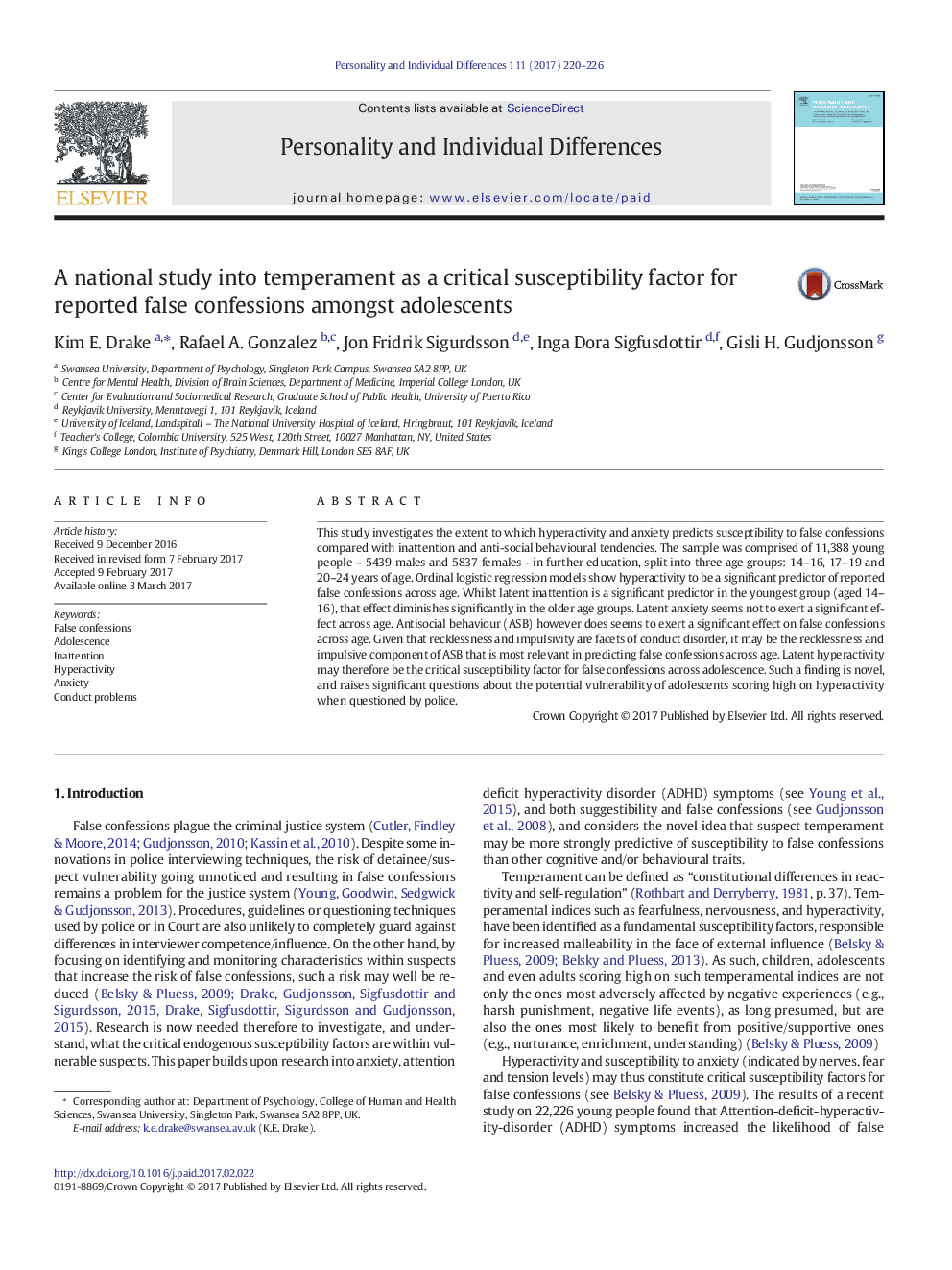ترجمه فارسی عنوان مقاله
یک مطالعه ملی به سلامت به عنوان یک عامل حساسیت بحرانی برای اعترافات غلط در نوجوانان گزارش شده است
عنوان انگلیسی
A national study into temperament as a critical susceptibility factor for reported false confessions amongst adolescents
| کد مقاله | سال انتشار | تعداد صفحات مقاله انگلیسی |
|---|---|---|
| 135326 | 2017 | 7 صفحه PDF |
منبع

Publisher : Elsevier - Science Direct (الزویر - ساینس دایرکت)
Journal : Personality and Individual Differences, Volume 111, 1 June 2017, Pages 220-226
ترجمه کلمات کلیدی
اعترافات دروغین، بلوغ، نادیده گرفتن، بیش فعالی، اضطراب، مشکلات را انجام دهید
کلمات کلیدی انگلیسی
False confessions; Adolescence; Inattention; Hyperactivity; Anxiety; Conduct problems;

